Last updated on
Discover the simple steps to accurately measure your couch, ensuring a perfect fit for your living space and avoiding any sizing mishaps.
When it comes to buying new furniture, one of the most important things you need to consider is the size. After all, you don’t want to end up with a couch that’s too big for your living room or too small for your family.
But how do you measure a couch? It may seem like a simple task, but there are actually some important factors to consider. In this article, we’ll go over everything you need to know about measuring a couch so that you can make an informed decision when it comes time to buy.
So grab your measuring tape and let’s get started!
Key takeaways:
- Accurate measurements are crucial for buying the right size couch.
- Use a measuring tape to measure length, width, height, and other dimensions.
- Consider seat depth, cushion thickness, armrest height, and backrest angle.
- Measure for sectional sofas and sleeper sofas separately.
- Factor in doorways and delivery logistics when planning your purchase.
Table of Contents
Importance of Accurate Measurements

Accurate measurements are crucial when it comes to buying a couch. Without them, you run the risk of purchasing furniture that doesn’t fit in your living space or is uncomfortable to use.
Measuring your couch may seem like a simple task, but it’s important to take into account all the different dimensions and angles that can affect its size and shape.
For example, if you don’t measure the height of your couch correctly, you might end up with one that’s too tall for your room or too low for comfortable seating. Similarly, if you don’t consider seat depth when measuring a sofa, you could end up with cushions that are either too shallow or deep for optimal comfort.
Inaccurate measurements can also lead to problems during delivery and installation. If the furniture is larger than expected due to incorrect measurements taken by yourself then there will be issues fitting through doorways which could result in damage being caused both inside and outside of property.
Purpose of Couch Measurements

Accurate measurements are essential when buying new furniture, especially if you’re working with limited space or have specific design requirements. By taking the time to measure your couch properly, you can avoid any sizing mishaps and make sure that the piece of furniture you choose will be both functional and aesthetically pleasing.
For instance, imagine purchasing a beautiful sectional sofa only to find out it’s too big for your living room or doesn’t fit through the doorway during delivery. This could lead to frustration and disappointment as well as additional expenses for returns or exchanges.
Required Tools and Materials
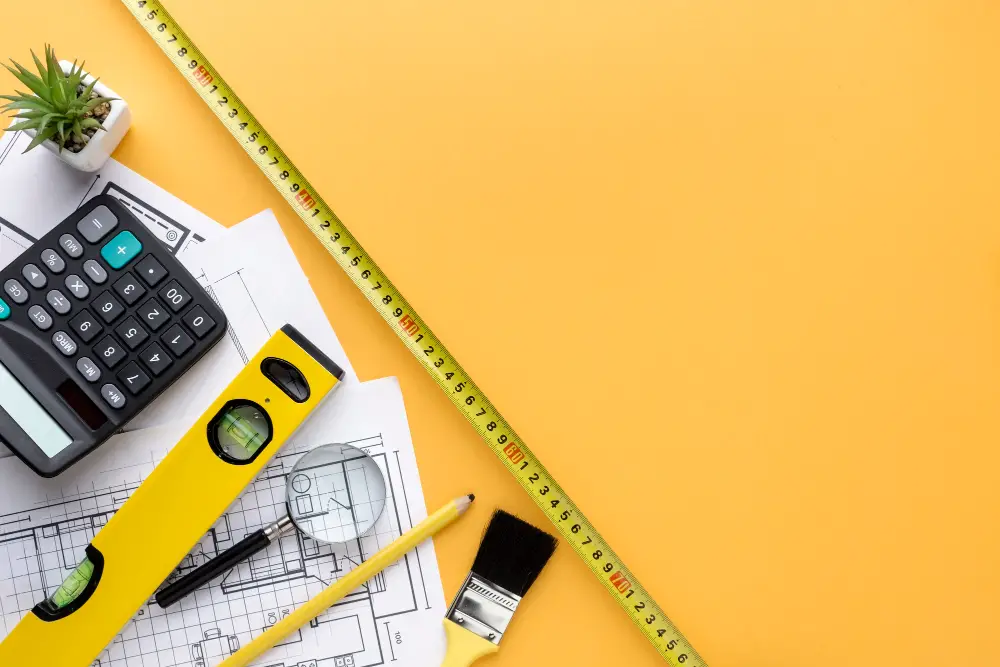
The good news is that you probably already have most of them at home! Here’s what you’ll need:
1. Measuring tape: This is the most important tool for measuring your couch.
Make sure it’s long enough to measure the entire length and width of your sofa.
2. Pen and paper: You’ll want to write down all of your measurements so that you can refer back to them later.
3. Level or straight edge: This will help ensure that your measurements are accurate by providing a straight line for reference.
4. Calculator (optional): If math isn’t really your thing, a calculator can be helpful when adding up different dimensions or calculating area.
Measuring the Couch

Begin by removing any cushions or pillows from the couch so that you can get an accurate measurement of its frame.
To measure the length of your couch, place one end of your tape measure at the outer edge on one side of the sofa and extend it to the other side. Be sure to take note if there are any arms or armrests that protrude beyond this point.
Next, measure across from front-to-back for width (also known as depth). This will give you a sense for how much space is available when sitting down.
For height measurements, start at floor level and extend up until reaching topmost point on backrest cushioning.
When measuring seat depth be sure not only include cushioning but also account for additional support structures such as springs or webbing underneath them which may affect comfort levels over time if they’re too shallow!
Measuring Length
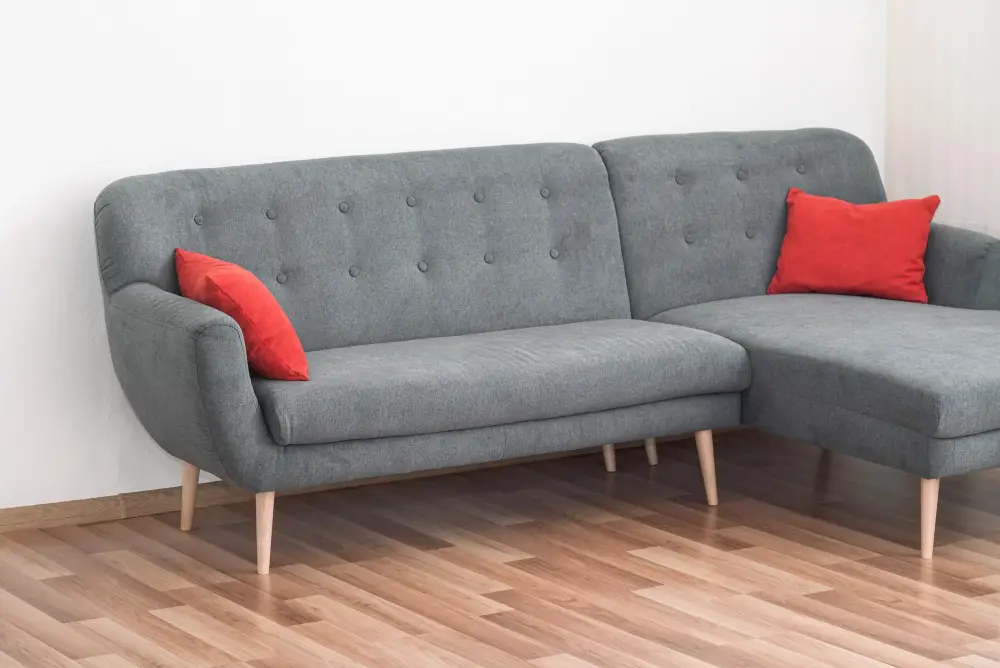
To measure the length, start by placing your measuring tape at one end of the couch and extend it all the way to other end. Be sure to take into account any curves or angles that may affect its overall measurement.
It’s also important to consider whether you want a tight or loose fit for your couch cover when taking measurements. If you prefer a tighter fit, subtract an inch from each side before recording measurements; if you prefer looser fitting covers, add an inch on each side instead.
Remember that accurate measurements are crucial when purchasing furniture online as well as in-store since returns can be costly and time-consuming.
Measuring Width
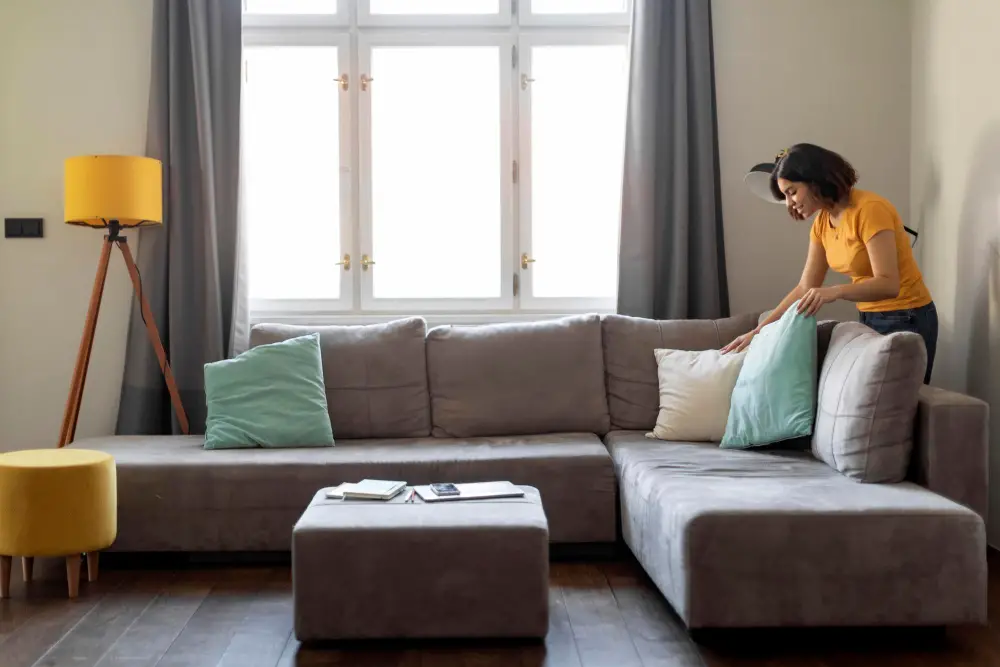
To measure the width, start by placing one end of your measuring tape at one side of the couch’s widest point. This could be either at the armrest or cushion edge, depending on which part extends further outwards.
Next, extend the measuring tape across to where it meets with another armrest or cushion edge on the opposite side. Make sure that you’re holding it taut and straight so that you get an accurate measurement.
If there are any curves or angles along this path, make sure to follow them closely with your measuring tape to ensure accuracy. Once you have measured from one end to another and recorded this number down accurately (in inches), repeat this process two more times – once in front and once behind – just in case there are any variations due to unevenness.
Measuring Height
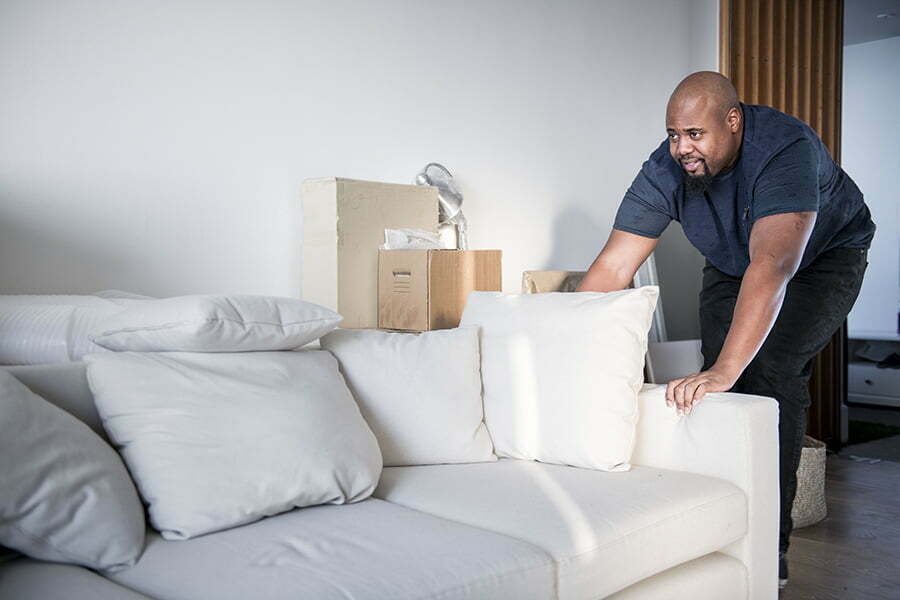
To measure the height, you’ll need to start at the base of the couch and measure all the way up to its highest point. This could be either at the top of its backrest or armrests, depending on which part is higher.
When measuring for a sectional sofa, it’s important to take into account each section’s individual height as well as their combined heights when assembled together. If you’re measuring for a sleeper sofa with an elevated mattress platform, make sure to include that in your measurement.
It’s also crucial to consider any obstacles that may affect how high or low you want your couches’ arms and backsides positioned relative to other furniture pieces like coffee tables or end tables.
Assessing Seat Depth

This measurement determines how far back you can sit in the couch and still have your feet touch the ground comfortably. To assess seat depth, measure from the front edge of the cushion to where it meets with the backrest.
When assessing seat depth, keep in mind that different people may prefer different depths depending on their height and personal comfort preferences. A general rule of thumb is that a comfortable sofa should have a seat depth between 18-24 inches.
If you’re buying online or unable to test out seating before purchasing, be sure to check product descriptions for information on recommended heights for users based on their size range (e.g., petite, average height). Some manufacturers offer customizable options such as adjustable lumbar support or removable cushions which can help tailor your seating experience even further.
Confirming Seat Height

One important measurement is the seat height. This refers to how high off the ground the cushions are when someone is sitting on them.
To confirm seat height accurately, measure from the floor up to where your body would rest against a cushion while seated. If there are multiple cushions or layers of padding involved in creating this seating surface (such as with a recliner), then take an average measurement across all levels.
It’s essential that you get this measurement right because it can affect both comfort and accessibility for people who may have difficulty getting up from lower seats or reaching higher ones comfortably.
Evaluating Backrest Angle

This is especially crucial if you plan on spending a lot of time sitting on your couch, as an uncomfortable backrest can lead to poor posture and even pain. To measure the backrest angle, place one end of your tape measure at the bottom of the seat cushion and extend it up along the center line of the backrest until you reach its highest point.
Then use a protractor or inclinometer to determine its angle from vertical.
Most people find that an ideal sofa has a slightly reclined backrest with an angle between 100-110 degrees from vertical. However, this may vary depending on personal preference and intended usage (e.g., watching TV vs reading).
Keep in mind that some sofas have adjustable backs which allow for customization based on individual needs.
Cushion Thickness Considerations

This is especially true if you’re looking for a comfortable seating experience. Cushion thickness can vary greatly from one couch to another, so it’s important to take this into account when making your measurements.
To measure cushion thickness, simply remove any pillows or loose cushions and measure from the top of the seat cushion to where it meets the backrest. If you have fixed cushions that cannot be removed, use your best judgment in estimating their thickness.
Keep in mind that thicker cushions may make a couch look more inviting and comfortable but they also tend to take up more space than thinner ones. So if you’re working with limited space or prefer a sleeker look for your furniture pieces then opting for thinner cushioning might be better suited.
Measuring Armrest Height
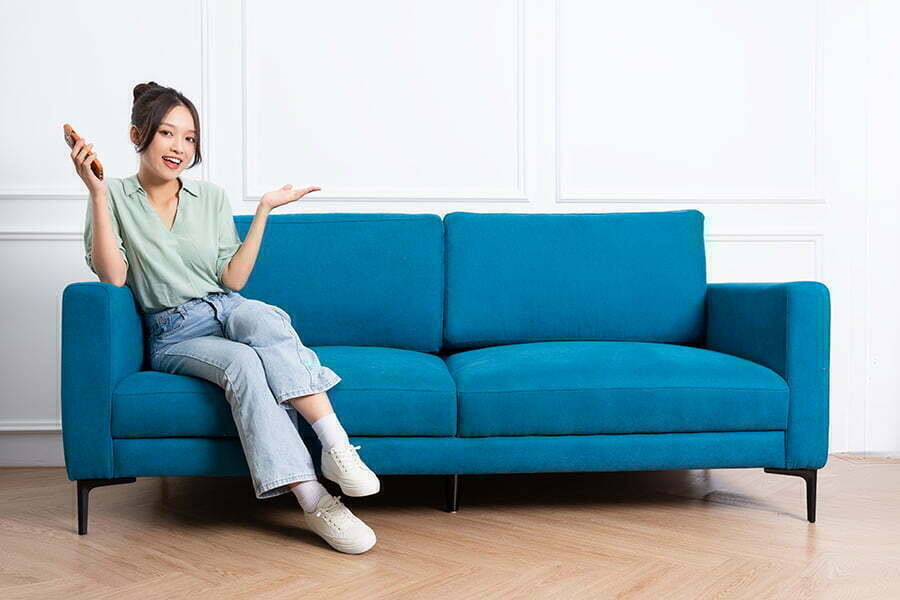
Armrests are not only important for comfort, but they also play a significant role in the overall look and feel of your furniture. To measure armrest height, start by sitting on the couch with your feet flat on the floor and back straight against the backrest.
Then, measure from where you’re seated to where your elbow naturally rests on top of the armrest.
It’s essential to ensure that this measurement is comfortable for you since it can affect how relaxed or tense you feel while using it. If possible, try out different heights before making a purchase decision to find what works best for you.
Keep in mind that some sofas have adjustable or removable arms which can be helpful if there are specific requirements such as accommodating people with disabilities or fitting through narrow doorways during transport.
Analyzing Diagonal Depth

This refers to the distance between the back of the sofa and its front edge, measured along a diagonal line. To measure this, place one end of your tape measure at the highest point on one armrest and extend it diagonally across to where it meets with the opposite corner at its base.
Analyzing diagonal depth is crucial if you’re looking for a comfortable seating experience as well as ensuring that there’s enough space in front of your couch for foot traffic or other furniture pieces. If you have limited space in your living room, then choosing a sofa with less diagonal depth can help maximize floor area while still providing ample seating.
It’s essential not only to take accurate measurements but also factor in how they will affect both comfort and functionality before making any purchase decisions.
Gap Measurements

A gap measurement refers to the distance between the back of the couch and any walls or other furniture that may be behind it. This is important because you don’t want your couch to be too close to a wall or other piece of furniture, as this can make it difficult for people to move around and can also cause damage over time.
To measure for gaps, start by placing your measuring tape at the back of the sofa and extending it out towards any nearby walls or pieces of furniture. Make sure you take into account any skirting boards or baseboards when taking these measurements.
It’s also important to consider how much space you need between your couch and other items in order for them both function properly together without causing damage over time. For example, if there is a coffee table in front of where you plan on placing your new sofa then make sure there is enough room so people can walk comfortably around both pieces without bumping into anything.
Accounting for Legs and Casters

These can add a few inches to the overall height of the couch, which could make a big difference if you’re trying to fit it under low-hanging shelves or cabinets. To measure for legs and casters, simply measure from the floor up to where the seat cushion begins.
If there are removable feet on your couch, you can also remove them before measuring for a more accurate result.
It’s worth noting that some sofas have adjustable legs or feet that can be raised or lowered depending on your needs. If this is the case with your sofa, make sure you adjust them accordingly before taking measurements.
Sofa Measurements for Different Types

For example, a sectional sofa will require more detailed measurements than a standard three-seater couch. Similarly, sleeper sofas will have additional dimensions to consider when measuring.
If you’re shopping for a sectional sofa, you’ll need to measure each section individually and take note of the angles where they connect. This will help ensure that your new sectional fits perfectly in your living space without any awkward gaps or overlaps.
For sleeper sofas, be sure to measure the length and width both when the bed is open and closed so that you can determine if there is enough room for guests comfortably.
Measuring for a Sectional Sofa
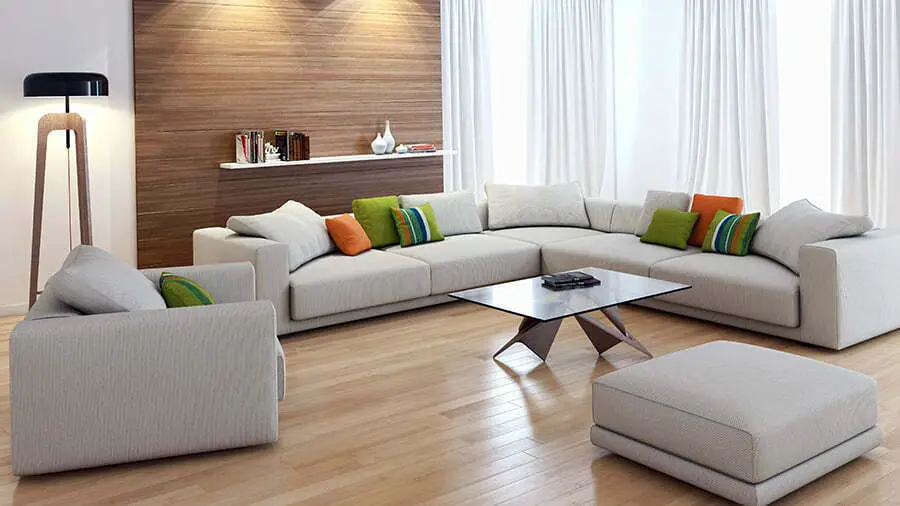
Sectionals come in different shapes and configurations, so it’s important to measure carefully to ensure that your new piece of furniture fits perfectly into your space.
To start, determine which type of sectional you want: L-shaped or U-shaped. Then measure the length and width of each section separately.
For an L-shaped sectional, measure both sides from end-to-end along the backrests.
Next up is determining how much space you need between each section for comfortable seating and movement around the room. A good rule of thumb is to leave at least 18 inches between sections but adjust as needed based on personal preference.
Don’t forget about any additional features such as recliners or chaise lounges that may affect measurements. Take note if these features are built-in or separate pieces that will need their own measurements taken into account when planning out your living room layout.
Measuring for a Sleeper Sofa
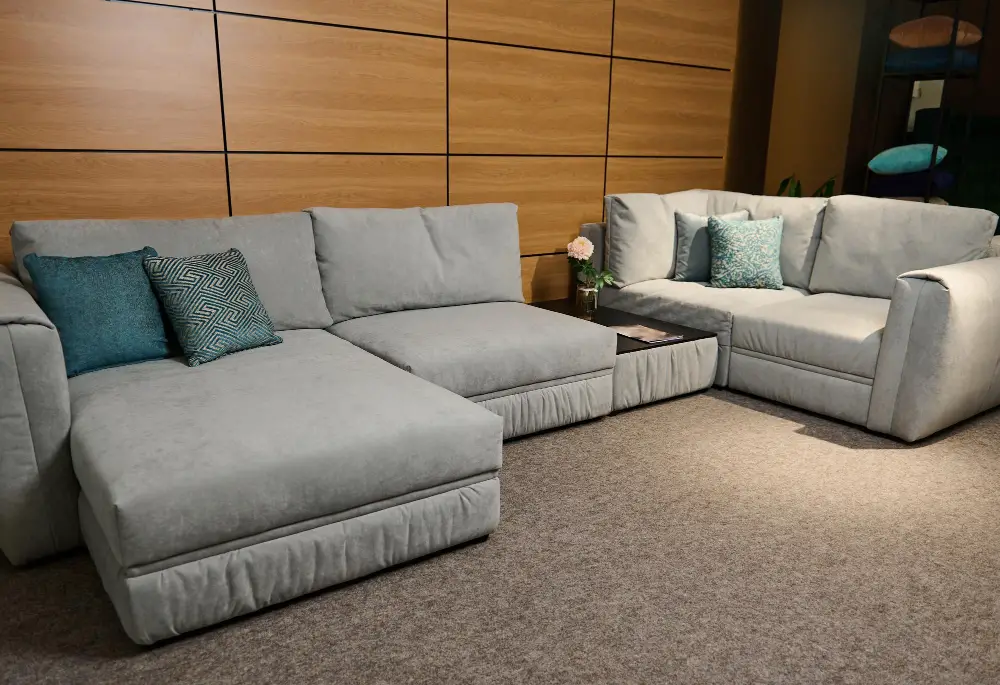
Sleeper sofas come in various sizes and styles, so it’s essential to measure your space accurately before making a purchase. When measuring for a sleeper sofa, keep in mind that you’ll need to account not only for the size of the couch but also its extended length when opened into a bed.
To measure your space accurately for a sleeper sofa, start by determining where you want to place it. Measure the area from wall-to-wall or corner-to-corner and make sure there’s enough room around all sides of the couch when fully extended as well.
Next, consider how much clearance is needed between furniture pieces or walls if placing other items nearby. You don’t want any obstructions preventing easy access when opening up your new piece of furniture!
Factoring in Doorways
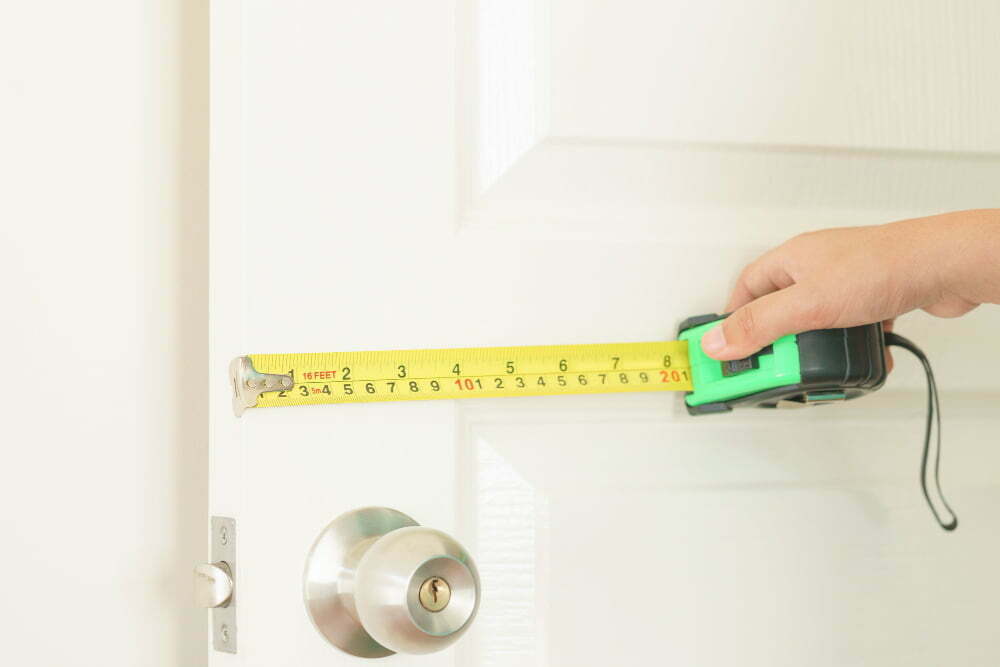
If you have narrow doorways or tight corners, you may need to choose a smaller couch that can fit through these spaces. To measure for this scenario, start by measuring the width of your doorway and any other narrow passages that the couch will need to pass through.
Then compare those measurements with the width of your chosen sofa.
If there isn’t enough clearance space for a larger sofa, don’t worry! There are plenty of options available in smaller sizes that still offer comfort and style without sacrificing too much seating capacity.
It’s also worth considering whether or not you’ll be able to maneuver around corners during delivery. In some cases, removing doors from their hinges can provide just enough extra space for furniture delivery teams carrying large items like sofas.
Transport and Delivery Planning
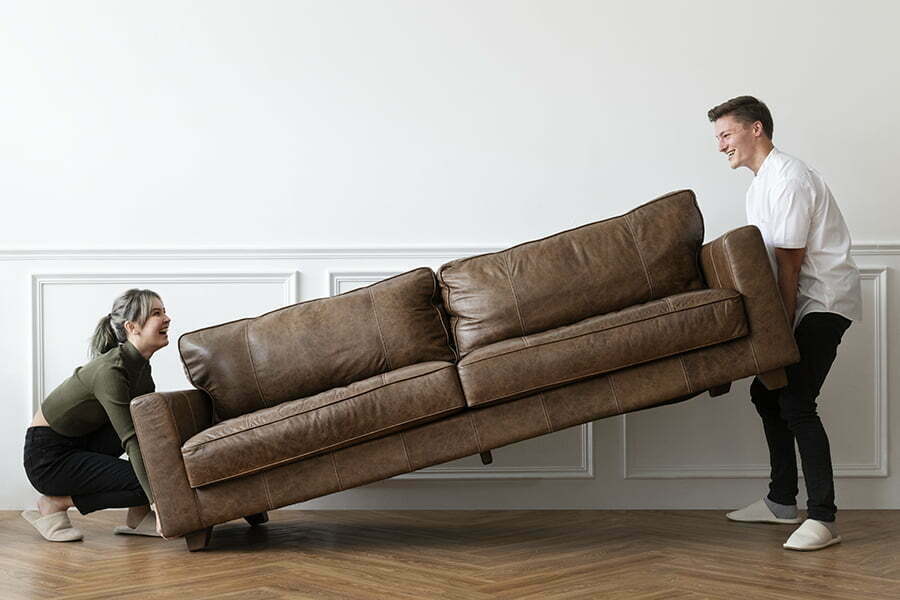
Before making a purchase, consider the logistics of getting the couch into your home. Measure doorways, hallways and staircases to ensure that there is enough space for the furniture to pass through without any damage or difficulty.
If you live in an apartment building or condominium complex with elevators, make sure that they are large enough for the couch dimensions as well as any additional equipment needed during transportation such as dollies or hand trucks.
It’s also important to communicate with your delivery team ahead of time regarding any special instructions on how best to handle and deliver your new piece of furniture. By taking these steps beforehand, you can avoid potential headaches down the road when it comes time for installation.
FAQ
How do you measure a 3 seater couch?
To measure a 3 seater couch, simply use a tape measure to determine its width in the seating area, depth, and height, keeping in mind that a standard size is approximately 90 inches wide, 38 inches deep, and 34 inches high, but may vary between brands.
Do couch measurements include the arms?
Yes, couch measurements include the arms, as the width measurement should encompass the entire sofa, including its arms.
Is length or width first?
In an NLP-friendly format: Length comes first, followed by width.
What is the best way to measure a sectional sofa accurately?
The best way to measure a sectional sofa accurately is by measuring each individual section’s length, width, and height, then combining the dimensions to obtain the total size.
How can measuring a couch correctly help in purchasing the right slipcover?
Measuring a couch accurately aids in purchasing the right slipcover because it ensures a proper fit, enhancing the appearance and functionality of the couch.
Are there any standard dimensions for various sofa types (e.g. loveseat, recliner, Chesterfield)?
Yes, there are standard dimensions for various sofa types, such as loveseats (52-58 inches wide), recliners (30-39 inches wide), and Chesterfields (94 inches wide).





